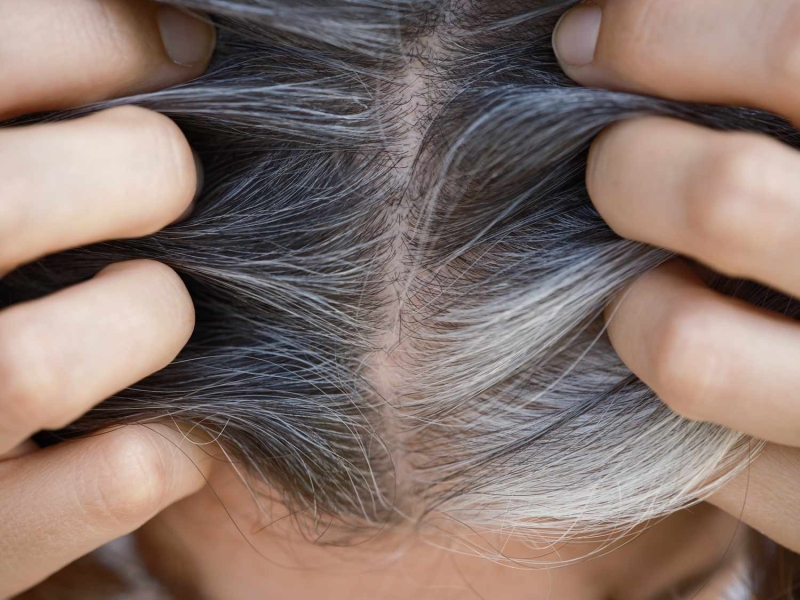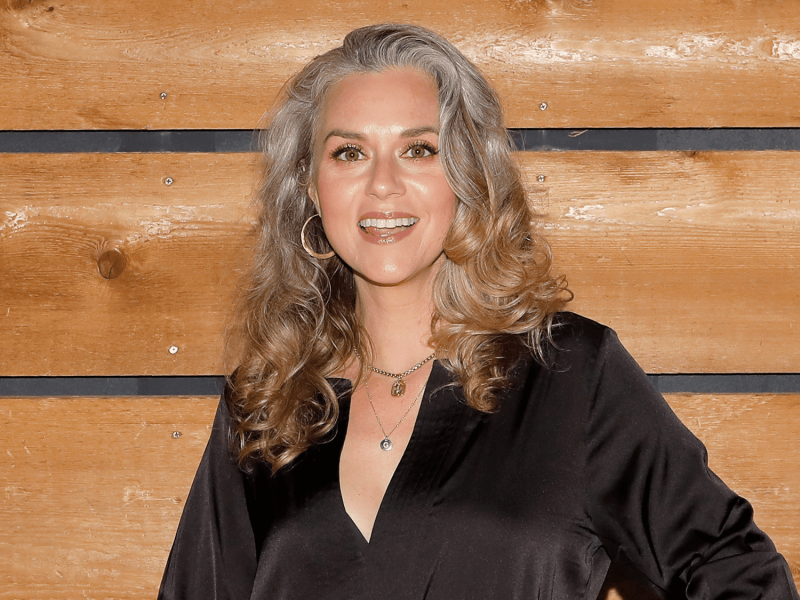Contents
As you age, there are a number of things to look forward to, like increased self-assurance and major life milestones. But getting older also inevitably comes with physical changes that aren’t always so welcome—especially when it comes to your hairline.
Meet the expert
- Joyce Imahiyerobo-Ip, MD, FAAD is a board-certified dermatologist and Medical Advisor for Great Many. Lucky Sekhon, MD, is a double board-certified reproductive endocrinologist and OB/GYN at RMA of New York and an assistant clinical professor at the Icahn School of Medicine at Mount Sinai. Stef Rippenbaum, NP, is a board-certified nurse practitioner and the Director of Clinical Services at Great Many. Jeannetta Walker-Rodgers is a celebrity hairstylist and the Global Technical Director for Joico.
“As we age, we may notice changes in our hair, including increased shedding, excessive dryness, increased fragility of the hair shaft, brittleness, and graying,” says board-certified dermatologist Joyce Imahiyerobo-Ip, MD, FAAD. With all of these things happening on top of other perimenopause and menopause symptoms, it can feel overwhelming, to say the least. Thankfully, figuring out an age-targeted hair-care routine will ensure your hair feels and looks healthy for the long haul.
Below, learn all about hair care after 40, from what hormonal changes and symptoms to expect to all the best strategies for maintaining healthy hair through the years.
What hormonal changes occur after 40?
“As women step into their 40s, they begin to notice significant hormonal shifts due to the gradual decline in estrogen and progesterone levels,” says double board-certified reproductive endocrinologist and OB/GYN Lucky Sekhon, MD. This is called perimenopause, and it occurs before menopause. “During this period, women may experience a variety of symptoms, including irregular menstrual cycles, mood swings, hot flashes, and changes in energy levels,” she says.
Beyond that, you may notice skin and hair changes due to fluctuating hormones. Essentially, once you hit your early 40s, your hormones begin to age. This looks like a gradual reduction in estrogen, progesterone, and testosterone. “Estrogen, which is vital for reproductive health, bone density, and skin health, diminishes significantly, as does progesterone, which affects menstrual cycles and triggers menopausal symptoms,” says Dr. Sekhon. “Testosterone levels also decrease, influencing muscle mass and libido.” Once these hormonal shifts occur, you’ll often begin to notice more gray hair, fragile strands, and overall thinning.
“Hormonal hair loss is very common in perimenopausal and menopausal women,” Dr. Imahiyerobo-Ip tells InStyle. “Many factors may contribute to hormonal hair loss, including genetics and decreasing estrogen levels.” Estrogen keeps hair in the growth phase longer, explains Dr. Sekhon, so its decline may lead to hair thinning and increased shedding. “Additionally, as estrogen decreases, androgens (male hormones) become more prominent, which can cause hair to become finer and thinner. Hair may lose volume and become more brittle, and the scalp can become drier and more sensitive,” she says.
As you age, it’s key to have a healthcare team in place—for hair health and beyond. “Schedule an annual physical with your primary care provider to monitor key indicators like vitamin D, thyroid levels, testosterone, and iron,” says board-certified nurse practitioner Stef Rippenbaum. “Imbalances in these factors can accelerate hair loss, so addressing any abnormalities promptly is important.” These changes can sound scary, but preparation and knowledge are key to keeping your hair healthy.
What solutions exist to support healthy hair as we age?
A Healthy, Balanced Lifestyle
More than any product or treatment, a healthy lifestyle will be the most impactful thing you can do to age well. “Maintaining a balanced diet rich in vitamins and minerals can support overall health, as well as hair health,” says Dr. Sekhon. This looks like prioritizing foods that are high in calcium, vitamin D, and Omega-3 fatty acids. She also recommends incorporating gentle movements like yoga and meditation to manage stress (a key cause of hair loss) and improve your mental health. And, of course, don’t skimp on hydration or sleep, either.
Minoxidil
Minoxidil, a.k.a. Rogaine, is “a gold standard in hair loss medicine” according to Dr. Imahiyerobo-Ip, and it’s not just for men. You can use it topically or take it orally as a pill if you get a prescription from your doctor. Regardless of how you take it, the medicine increases blood flow to the scalp, which in turn works to improve overall hair density and encourage new hair growth. Heads up, Dr. Imahiyerobo-Ip notes that it has to be used long-term in order to maintain your results. We recommend chatting with your primary care provider or dermatologist before starting minoxidil so you can maximize the benefits.

Medications and Supplements
Beyond minoxidil, there are other medications and non-prescription supplements that could help you reach your hair goals, but you should always get bloodwork done with your physician to determine what’s necessary so you’re not overpaying for supplements you don’t need. “Androgen blockers such as oral spironolactone and finasteride help to block the effects of androgens on your hair, leading to less hair thinning,” says Dr. Imahiyerobo-Ip. Hair supplements like Nutrafol Women’s Balance, Hum Hair Strong, and Act+Acre Thick and Full Capsules are formulated for hair thinning (and this author has tried and loved ‘em all), but again, it’s important to get the okay from your doctor before shelling out your money on non-regulated natural supplements.
In-Office Treatments
You can also choose to go the clinical route by seeking treatments performed in a dermatologist’s office or an aesthetics or specialty hair clinic. These include platelet-rich plasma (a.k.a. PRP), red light therapy, and laser-assisted growth factor therapies. PRP, in particular, uses the “liquid gold” plasma from your own blood and injects it back into your scalp. “As we age, our body’s blood circulation becomes less efficient, impacting hair growth,” says Rippenbaum. “In areas where circulation is poor, oxygen and nutrients necessary for robust hair growth may be lacking. PRP injections deliver concentrated growth factors to targeted areas, promoting supportive conditions for hair regrowth.” Typically, people need between three and six PRP treatments, followed by annual maintenance injections to keep up the hair growth. Red light therapy has shown promise in a few studies, but the best option is to go through a dermatologist rather than buying a red light device, as these devices are often less powerful (and sometimes not FDA-cleared) than those found in medical offices.
Proper Scalp and Hair Care
A gentle hair and scalp care regimen is key to hair longevity, says Rippenbaum. Minimizing heat exposure, the use of harsh chemicals, and tight hairstyles will help maintain soft, healthy hair. And while there’s nothing wrong with dyeing your grays, try your best to minimize excessive chemical applications to the hair. At the very least, you can follow up your root touch-up with a soothing scalp serum (we like Arey’s Calm It Down serum). “Over-washing or under-washing your hair and scalp can increase your risk of hair breakage, too,” says Dr. Imahiyerobo-Ip, so ensure that you keep your shower well-stocked with gentle hair-care products that won’t strip your strands of their natural oils. Celebrity hairstylist Jeannetta Walker-Rodgers recommends finding products formulated with collagen, biotin, keratin, and hyaluronic acid for visible volume and softness.
What are the best ways to style aging hair?
Walker-Rodgers recommends going light on conditioner and leave-in treatments as your hair gets finer and thinner, since it’ll weigh down your strands. Instead, focus on getting lift with texturizing and thickening sprays to make the most out of your natural texture. You might notice an unexpected benefit, too: As your hair ages, it’s actually easier to hold a style since it isn’t as smooth and silky. To keep your scalp in check, “implement a clarifying or detoxifying treatment or shampoo once or twice per month to rid your scalp of product build-up,” she says. Tread lightly, though, and be sure to follow with a nourishing hair mask or conditioner on detox days to keep your fragile hair from drying out further. To protect against heat damage, she suggests always using a heat-protectant spray or cream before blowing out, curling, or straightening your hair. “And just because many heat protectants work up to 450 degrees, doesn't mean your hair needs that much heat,” she says. “Turn the heat down, ideally between 300-390 degrees.”
As much as society has placed a negative connotation around aging, it's natural and inevitable that our skin, hair, and life changes over the years. So while it may feel stressful to begin to see changes around your hairline, try your best to take it in stride. And remember: From minoxidil to PRP to a mindfulness routine, there are plenty of ideas and solutions in place to keep your hair in tip-top shape well after you enter your 40s.
